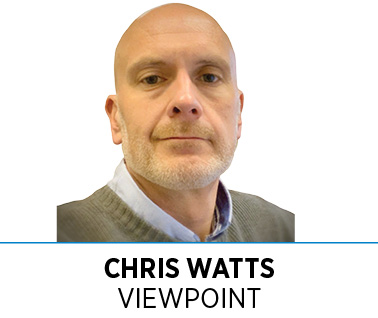Subscriber Benefit
As a subscriber you can listen to articles at work, in the car, or while you work out. Subscribe Now The Personal Consumption Expenditures Price Index—the Fed’s preferred barometer for inflation policy—hit a 40-year high through February, with a 6.4% annual rate. The new data confirms the strain many of us are feeling on household budgets and business balance sheets.
The Personal Consumption Expenditures Price Index—the Fed’s preferred barometer for inflation policy—hit a 40-year high through February, with a 6.4% annual rate. The new data confirms the strain many of us are feeling on household budgets and business balance sheets.
But we’re also affected as taxpayers and consumers of public services, as rising costs impact the capacity of government to keep up with basic obligations—from filling potholes to hiring teachers, police and firefighters.
Does inflation threaten state and local budget priorities, and will cities like Indianapolis struggle with fiscal stress if these conditions continue?
We might expect rising prices to boost the sales tax, Indiana’s largest source of general fund revenue. However, our tax base excludes many necessities (like groceries) that are leading the surge of inflation, leaving less discretionary income to spend on taxable goods. Consumer spending rose 0.2% in March, less than half what economists expected.
Sales tax revenue was already expected to flatline in 2023 as Hoosier spending habits shift back to pre-COVID patterns; inflation could accelerate the trend heading into a new state budget cycle. This could be most noticeable to school corporations, which depend on state aid to pay teachers and will be pushed to raise salaries to keep up with a steeper cost of living.
Our healthy state budget surplus provides some insulation against inflation, at least for the near term. Local governments are more vulnerable to elevated costs lingering into next year.
The two primary sources of county and municipal revenue—property and local income taxes—are based on economic activity one or two years delayed, as inflation drives up costs in real time. Property tax bills are based on assessments from the previous year, and local income taxes are paid to the state and redistributed to counties based on past collections.
Local governments are facing the same payroll pressures as other employers in a tight labor market, along with rising costs for supplies, fuel and other operating inputs. And Indy’s billion-dollar annual infrastructure gap can only grow as the national Highway Construction Cost Index has risen at a double-digit clip since late 2020.
State and local governments divide revenues from Indiana’s gasoline use tax to fund a significant share of road and highway needs (according to a formula that already disadvantages urban areas like Indianapolis). Prices at the pump have spiked, but gas consumption has been sluggish and it’s unlikely collections will keep up with needs.
Adjusted for inflation, local spending was growing about 2% annually over the five years leading into the pandemic. The Personal Consumption Expenditures Price Index is rising more than three times that rate. But few factors are easing the local revenue outlook.
Federal relief and a faster-than-expected economic recovery kept personal income growing through 2020 and 2021, and home prices have risen rapidly over the same timeframe—keeping property tax levies growing, though less than the current rate of inflation. The Treasury recently granted more flexibility on local uses of American Rescue Plan funds, which could offer temporary budget relief.
Indiana could increase local government “buying power” by resurrecting reforms aimed at improving efficiency and consolidating overlapping bureaucracies. A leaner local budget climate also raises the stakes for state-level investments in quality of life and the shared costs of education, infrastructure and economic development.
The latest PCE report is likely to prompt the Fed to take more aggressive action toward an inflation target of 2%-3% in 2023, interest rate hikes that bring their own economic tradeoffs. But if current conditions persist, state and local officials will be pushed to manage costs, budget priorities and constituent expectations simultaneously.•
__________
Chris Watts is president of the Indiana Fiscal Policy Institute.
Please enable JavaScript to view this content.
